The story so far: Remembering key results and our constant strife for bigger goals.
- 2009
- 2010
- 2011
- 2012
- 2013
- 2014
- 2015
- 2016
- 2017
- 2018
- 2019
- 2020
- 2021
- 2022
- 2023
Our history
2009
- 2
- people
Sasha Pavlov
Co-founder
The beginning
It was June, 2009, when “Vkontakte” opened its paying system for applications. First successful companies started to appear. Oleg has felt potential in it and offered to create our own game, and I agreed. We had absolutely no experience in game production, Oleg studied Flash on the go. We also had no money and no time for long-term development. Thatʼs why we had to quickly make something simple.
Apartment on the suburb
The first game was written in one night by two of us, sitting in the rental apartment on the suburb of St. Petersburg, where I lived. There were almost no furniture, we were drinking tea sitting on the floor of the kitchen, wallpaper was half-peeled. There was no table, too.
First try
We set two bookshelves upright and put a wooden board on them. With our two laptops standing on this construction we were working. Oleg was programming, and I was doing everything else. We were drawing by ouselves, too, as good as we could. When we launched, we founded that our application failed - it had few players and payments.
Debriefing
A week later I got a call from Oleg. He said: “I think I know what we did wrong. Let's try again.” We got together again and wrote a second application in one night. Immediately we posted it on “Vkontakte” and went to sleep.
The birth of the company
We woke up and saw, that according to the statistics we already have quite a lot of active players. With this application we started to get some small regular income, which let us grow and recruit more specialists for the team. That's how Playkot was born.
2010
- 11
- people

Sasha Pavlov
Co-founder
Release of Club Life

When Club Life reached 500,000 daily players, we were unexpectedly visited by the guys from "Radio Record" who said "We're holding a festival called "Transmission", let's collaborate on it". For us it was pretty unbelievable! the very same "Radio Record" that we'd listened to as kids had turned up on our doorstep to meet us!
Naturally, we agreed. We held a competition in the game: we awarded free tickets and offered a big prize for the top 3 winners - the chance to have their photo taken with DJ Paul Van Dyk. We organized the event very well. Our players liked it and during the competition we had a large influx of visits and a lot of new installations.
2011
- 14
- people

Alexei Guk
Art-director since 2011
An Art-director appears!
As art-director I had much more influence over our product. My efforts and initiatives had already been aimed at the maximum general result but it was this role that let me feel that everything I or my colleagues did had a real purpose. Any idea could pass a feasibility test and be made a reality if it was good enough.
Over time, the culture of our company began to take a form that closely resembled my world view: to be heard, it isn't absolutely necessary to be the art-director or a lead, being part of the team gave you a voice.
My vision of my own role changed too. Now my function is to strengthen the project teams at important moments by solving tasks alongside them, not passing down solutions from above and also to eliminate those factors that stop our creative colleagues from realizing their own visions.

Ivan Grigorev
Developer on Pioneers from 2011 to 2013
We produced the game in 7 weeks with a team of 3 people. On release the game included woodcutter Jack. When a player clicked on a tree, the character walked over to it and started to cut it down. This was a unique feature.
There was also Caroline who did farm work and grew corn. There was Thomas the builder, a plump kind of fella. There were a few little houses in the forest but apart from that nothing else. The rest appeared later. The basis of the game was about these people and their stories.
Release of Pioneers
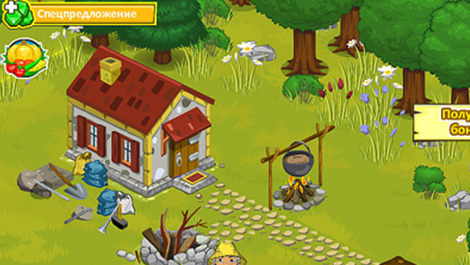

Daria Volodina
SuperCity game designer from 2011 to 2014
Release of SuperCity

We really tried to keep SuperCity a nice, kind game with interesting stories and a dash of magic. This was to keep our players coming back to spend time and make new achievements. What's the essence of the game, what's it about? About life, about kindness. About being able to do anything and get everything you want: all you need is patience, a wish and to never give up too soon.

Sasha Pavlov
Release of Farkle Live on iOS and Android
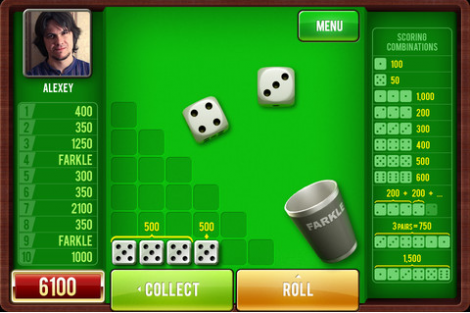
This was one of the experiments we did at that time. We released small games onto what was then a new platform and watched to see the reaction from users. All the other mobile games from that time have folded but Farkle still gets 10,000-15,000 daily users.

Roman Zorin
Warzone game designer in 2011
There was a feeling of "the team can do anything". From the very beginning I insisted that a game about modern warfare needn't be dark and gritty. Instead, we always wanted to give players the feeling of being on a tropical island. As such, I convinced the team to make the graphics bright and it was the right decision.
In addition to the casual setting, Warzone had great gameplay and so was easy to play. The good design made it possible to fight while feeling relaxed and unhurried, despite having to command your troops. At that time this was also a rarity. I think most of the expriments we made with Warzone came after its release. And it was definitely the game in which we made the most mistakes in terms of game design.
Release of Warzone

2012
- 27
- people

Anton Shelestov
Knights producer from 2012 to 2014
At that time I was the lead programmer on the SuperCity project. Once, Roma asked me to join him in the foosball room (it was at the old office) and told me that "it's time for me to start learning how to lead a project". I agreed and right then came up with my two main expecations for this new responsibility.
The first: if there's something that needs to be done for the project, the producer should find a way to do it. A project should never perform any work that's outside its own sphere of responsibility. I would either have to perform the task myself or find someone more qualified to do it.
The second: In many situations the producer can say what is most important for the project and should play an active role. He should constantly be ready to implement changes.
I love games and love making them (I have to say, I don't ever consider working in another sphere). This love for games helps me deal with the difficulties and solve issues, even if I sometimes feel I'm not fully qualified.
A Producer appears!

Anton Shelestov
The "Knights" saw several important factors come together: the first was a fairly serious fantasy setting which the designers liked and was interesting for players.
The second was the desire of all of us to "create something awesome" (that's why, even though we missed our release deadline, we finished with a high quality product with beautiful graphics).
The third was an assortment of unique gameplay elements that had appeared while we were fixing mistakes in "Warzone". As a result, we produced an original game which, even now, has no direct competition.
Release of Knights

2013
- 56
- people

Marina Lapaeva
HR manager since 2013
An HR manager appears!

I was really worried when we were starting to work together. Back then, neither Alexander, Oleg nor I had any idea of what needed doing. To be more accurate, they expected me to cover recruitment and that this was the main priority. I, however, had the nagging thought that I should be performing the whole range of HR tasks.
After almost a year we all came to the decision that our main concern should be internal processes. That experience provided the understanding that the easiest way to "get into" the company in terms of HR was by doing recruitment: that way you can get to know the processes, the teams and better understand the needs of your colleagues as well as learning about the product and the market.
Now my focus is spread all round the company, including recruitment. We got the added bonus of finding out that HR isn't only about posting vacancies.
2014
- 69
- people
SuperCity's release on Facebook


Ivan Grigorev
Titans producer from 2014 to 2015
Titans release
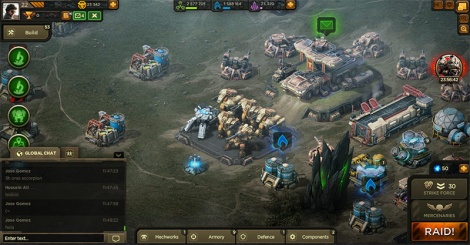
At first the game was called "Reign" and was a military strategy game about a post-apocalyptic future. But then at some point Dima Novikov, our future creative director, joined a project meeting and said "it'd be cool to do a game about giant robots". Everybody thought for a while and agreed: "Yeah, huge robots, that's really awesome!" After some time we changed the name to Titans and everything fell into place.

SuperCity wins Facebook's Best New Game 2014 Award

2015
- 67
- people

Rinat Valitov
TropicStorm producer since 2014
TropicStorm release

This time for our new game we decided to use tried and tested mechanics. Our team, which had gained experience from making "Warzone" focused on doing everything correctly and not missing anything out. We had the possibility to choose the right instruments beforehand. And we, with our love for programming and system engineering, used this opportunity by implementing many ground-breaking solutions during the game's development. In this way, TropicStorm became a long-standing source of technical innovation for the other projects.
2016
- 85
- people

Roman Zorin
Age of Magic producer
The idea for an RPG in a world torn apart by magic has been brewing a long time.
I made a rough draft of this world while I was still in school and the first conceptualization of the game appeared at Playkot in 2014 with the title “Portal”. At that time it was an isometric MMORPG for social networks. The concept was ambitious, large-scale and hardcore… and nobody at Playkot liked it.
I was still convinced that the basic game elements were awesome: epic heroes, exhilarating locations, visually exciting battles, a story about the conflict between the good and evil in all of us; a world destroyed by irresponsible, power-thirsty fanatics. Eventually I realized I had to find the right mix of these elements.
During three internal hackathons in 2015, our awesome professionals eagerly worked on pictures, mechanics and game prototypes. Their level of interest in the project reassured me that the game was on the right path.
Towards the end of the year the company had a high demand for a mobile project. At that time we had already done enough to accurately formulate the updated concept - it had now become a midcore mobile RPG. This was also the time it was given the name “Age of Magic”.
Later everything came together by itself somehow. At the start of 2016 we assembled a small team and started pre-production. The team modelled and animated the characters, visualized the arenas and wrote the first lines of code so everything would work. It all snowballed after that: people at the company started to see there was a real project behind all the words and got even more fired up. Our “Age of Magic” had begun.
Age of Magic begins
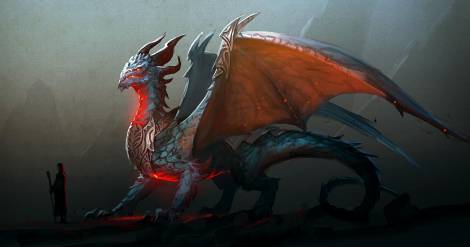

Anton Shelestov
Age of Magic project manager
The Greenlight

"Аge of Magic” took a long time to become a fully-fledged project. The game’s universe with its heroes and a world shattered into shards by a magic catastrophe had long been brewing in Roma’s imagination. There was a definite feeling it had the potential to be a hit but there was no clear concept of how to realize the idea.
Bearing in mind that the life cycle of a successful project is at least five years, we wanted to increase the probability of the game becoming a hit.
The greenlight concept aims to help with this process. If an idea has potential and can attract people, then they form a team and work with the greenlight committee (currently consisting of 5 members) to discover potential problems that can arise and block the road to success. After this, they propose possible solutions. If the greenlight process is successful, the project gets the “green light” and moves on to the next stage of development.
There were a great deal of ideas for how to realize the game, which is now known as Age of Magic. It took quite a long time for these ideas to coalesce into a single vision. While searching for a solution, Roma chose the mobile RPG genre and the mechanics of card battler games. During the first greenlight a complete vision of the project was formed which was then expanded during development.
The well-defined timeframe, the various opinions of the team members and their close cooperation helped the ideas to crystallize and fully take shape. The game passed all the greenlight stages and went into production.

Sergey Kovalev
SuperCity Mobile producer from 2014 to 2017
Softlaunch of SuperCity Mobile
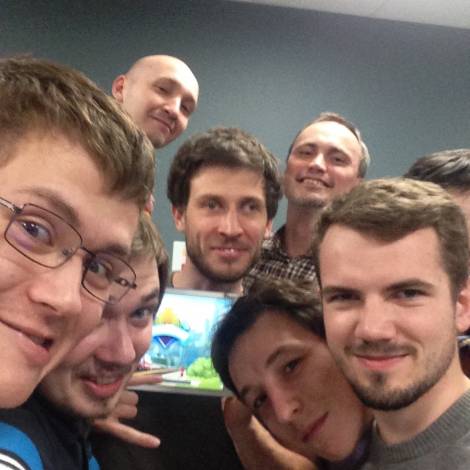
Our first aim was to transfer our web version to mobile in 9 months.
We put together a programming team, divided the tasks into separate stages and got to work. Half a year later there was a worrying feeling we were doing something wrong. When this feeling reached a peak, we halted work.
We had wanted to get into the top-50 grossing games but saw that the quality of all aspects of our product was not meeting the necessary standards. It became clear that a direct port was not appropriate for a mobile game and we would have to alter a lot of the game mechanics.
It was daunting to consider altering anything. After all, the social version was successful and if it ain’t broke - don’t fix it. What if we ended up making it worse?
Nevertheless, we took a step into the unknown: We brought a game designer to the team and began assembling a complete game using elements taken from the web version. We wrote a list of tasks and tinkered around with it until we fit it into the half-year deadline we had set. For the next six months we buckled down and worked even faster than before.
As is ever the case, the game was released at 02:00 am, right on the very last day of the deadline. We have a selfie of a dishevelled, tired but happy team, satisfied with the fruits of their labours.
The comments and ratings left at the AppStore showed us that players were enjoying the updated SuperCity and the game’s user statistics (primarily retention) were on par with other games on the market. We had actually made an interesting game with great business metrics.
We could breathe a sigh of relief. After half a year of frenzied development, we had created a product we could develop further, relying not only on our instincts but also on feedback from players. This was a crucial moment for the team.
We took a moment to catch our breath, then began further development of features which had not been included in the initial release, aiming to turn a good game into a great game.
2017
- 92
- people

Sasha Pavlov
Co-founder
We wrote our first games in just one night.
Later the time from a project’s start to its launch was three months.
After that, half a year was considered a long timeframe.
By 2016 the development period on our market had grown to two years and a game’s lifecycle to at least five years. A good example of this is SuperCity: a game that’s still thriving and developing 6 years after its launch.
With timeframes like these, you start to approach product development differently. A typical scenario when our games were launched used to be “the product takes off rapidly then its success slowly decreases”. In order to change this, we began planning the possible development of all new projects for several years in advance right from the start.
Occasionally the question arises: “Why not start making this game or that one or this one?”. To ensure we set our priorities sensibly for such long timeframes, it was important to look beyond the standard yearly plans we had used earlier. To understand how many products we should release in the next few years, when to do it and how much effort we should put into them to ensure success.
To stay focused on the important issues, we wrote our vision for the development of Playkot for ten years in advance. It was important to show everyone what kind of company we are building and where we are headed. Were we betting on a small number of high quality games or trying out lots of ideas and releasing average quality games? Were we working only on the social or mobile market or setting our sights wider?
We built our vision on the foundation of what was happening in the company at that moment, carefully identifying a common goal and the path we would take to achieve it. Lastly, we simply cut off anything that wasn’t applicable to the vision.
Long-term vision
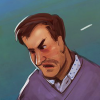
Ilya Pshenichnyj
SuperCity Mobile producer from 2017 to 2018
SuperCity Mobile global release
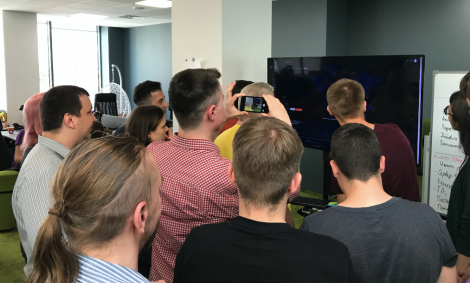
11 months after the soft launch, we were ready to make our first major release onto mobile platforms.
It was during that time that the game began looking more and more like a finished product and had gained considerably more content.
We made separate releases onto both platforms a week apart to be sure we could manage the server load. Later on, we were glad we had! When we launched, we were given a ton of support from the platforms and were even awarded “Editor’s Choice” in several categories simultaneously.
After that, we needed some time to get accustomed to the different tempo of development. Unlike with Facebook, where updates can be made regularly without players even noticing, on mobile, just preparing a version for release takes a week at least. That’s why both our approach and the quality requirements for each build were so different there.
SuperCity mobile helped us hone our strategy for entering what was a new market for us as well as inspiring the creation of an effective marketing model. It was also the first time we completed the full production cycle and blazed the trail for Playkot’s future mobile games.
2018
- 117
- people

Oleg Nalimov
SuperCity co-producer from 2017
Daily monitoring

To check on a project, we used to need to open our statistics system and make sense of what we were looking at, bug the producer for help, or wait for the monthly performance results.
But it reached a point where we’d had enough. So we bought a TV, set it up in the SuperCity space and streamed all the game’s key metrics to it. Team goals, current store rank, traffic, support rundowns, recent update reports, forecasts and more.
Then our other game teams started asking for their own screen. Dashboards turned into monitoring stations, and staff started slowing down as they walked by. How’s that update doing? Are our players happy? Are we growing or shrinking?
Now it’s all right there.

Roman Zorin
Age of Magic producer
In the beginning was the word, and the word was "Shni"
In the last few weeks before the launch, stress was high, sleep was low and time for emotion was non-existent. I can vaguely remember the moment we pressed "Release" in the dashboard and the game was open to the entire world… After that came a feeling that it was all so unreal.
At that stage, we still didn't really know the project's full potential. Sure, we believed it would be a hit. We knew the world we'd created was the canon for a huge universe that would come later. We knew we would later make other games whose stories would take place a thousand years after the "Kobold business". We hope to turn millions of fans into tens and hundreds of millions.
After two years of development, dozens of litres of coffee and long miles of discussions, we were still at the very start of it all.
Age of Magic global launch
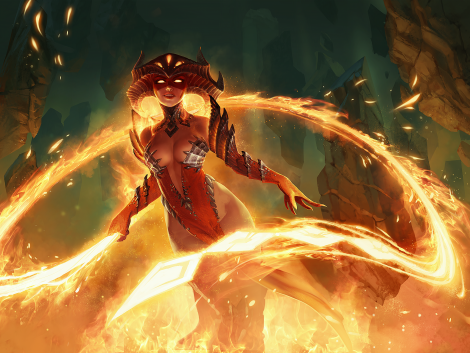

Rinat Valitov
PM on an unannounced project
Market watch

Launching a new game is hectic. Arguments around here can get heated: will people even play it? Should we go through with it? How? Why this game and not another? Everyone on the team has their own ideas.
So we figured some facts wouldn’t hurt. Our first major research effort focused on chart-topping games in various genres, how fast they turned a profit (and how much they earned), as well as market volumes, competitors…
Then monitoring the market turned into an everyday thing. Now we keep a constant eye on new/successful games in our genres, and stay on top of which trends are coming and going. This helps us estimate where we can win, and what we need to work on.
Does this guarantee a new game is going to be a hit? Can we make decisions on research data alone? Of course not. A new game’s success also depends on if we believe in it. But now the way we talk about it and make decisions is a whole lot more transparent.
2019
- 137
- people

Roman Zorin
Age of Magic producer
“Age of Magic looks too Western to ever take off in China.”
That’s what we kept hearing from China’s biggest publishers. They all said we need to either make the style more Eastern, or concentrate on Europe and the U.S.
In the end, we kept the graphics identical and rolled out the game in China as-is. Nobody was expecting any kind of real success in the beginning because we only launched on iOS, didn’t have a publisher, and knew that Western games rarely made it to the top in China.
Then came Lunar New Year and we launched Lunar Festival, a little event about characters from Journey to the West, and put out a bunch of hero skins in traditional Chinese outfits.
I really love the story of the Monkey King, and it’s a favorite in China too. It’s like Russia’s The Tale of Igor’s Campaign meets Spiderman, where a powerful historical plot reaches popularity on the level of Marvel comics. We put our hearts and souls into making sure everything was genuine and sincere.
Lunar Festival catapulted us to No.50 in the top grossing apps, which at the time was higher than any other Western game on the list.
Age of Magic goes to China
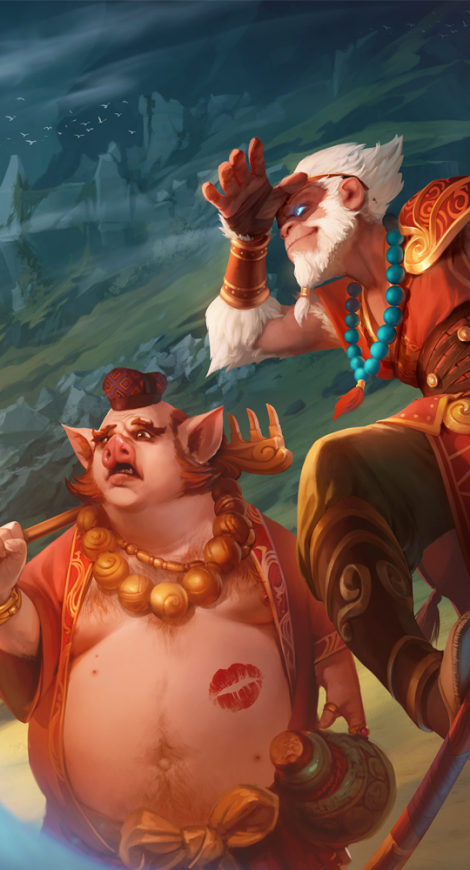

Dasha Volodina
Producer on an unannounced project
Ten years ago, I came to Playkot to join the gaming tech support team.
After a week, all four of the moderators working for me left the team. I took it really hard. I can still remember calling Sasha in a panic, having no idea how to handle the situation. Everything worked out fine, luckily all the moderators were kind enough to find their own replacements.
Later I became a game designer on the SuperCity project and I was entrusted with running ad integration: I had to liaise with ad-clients and discuss and meet the KPI. For example, while setting up integration with Sberbank, we spent a long time agreeing on a single green frame of a window--I remember how angry and powerless I felt, having to spend so much time on such a small detail. It took forever! Another time, we sent off a design layout with a placeholder text written by a cheeky programmer. We were lucky the client had a sense of humour and everything turned out fine. We even met the KPI we’d committed to.
Back then it all seemed hyper-critical and terrifying but now I smile when I think about it, especially since 2020 promises to present me and the company with somewhat bigger challenges. Now I’m the producer for a new project and I solve completely different issues, to make sure the project is a success. For example, I’m trying to work out how to hire 20 new people without watering down the culture at Playkot. Hopefully, in another two years I’ll look back at 2020 and smile too.
Celebrating 10 Years Working Together


Sasha Pavlov
Company Co-Founder
“If you are going to write, then let it be when you simply cannot not write” said Leo Tolstoy.
It feels like we do our projects the same way: if we’re making a game, it’s because we can’t live without that game.
When Zhenia Smirnov presented a new project about expeditions, we were struck with a feeling that not carrying out the project was not an option.
When Dasha, Nastya and Rinat told us about a big update for SuperCity mobile, it was immediately clear that this team didn’t need to do an update, they needed to create an entirely new game. And fast!
When the idea for Protectors came, we already knew that shooters would soon be a key genre for the mobile market and releasing the game in three years would be too late. It had to be now.
So towards the end of 2019, we had three projects in active condition, three being supported and three being developed. That’s great of course, but for a company our size, it’s probably biting off too much.
The ability to correctly assess our own strengths is something we have yet to master. As such, our most interesting discovery of the year was “focusing”. Focusing is not when you discard the unimportant and put all your energies into what’s important; anybody can do that. Declining what’s important in favour of what’s most important - that’s a rather more difficult task. We spent the year learning how to do it.
Three New Projects
2020
- 230
- people

Ann Karneeva
Happiness Lead
Set loose the goose!
Leonid tried to stop it.
When quarantine came thudding down around us, we took our meetings from the conference room to streams on YouTube. We added a Slack chat for any questions arising during the stream. But soon we realized we’d unleashed the Kraken and the questions would not all be on-topic.
This flood swept aside the efforts of those trying to hold back the deluge of questions. Oksana asked everybody to keep it in the thread. Leonid tried appealing to rationality “guys, just give a like. NO FLOODING”. But fully unleashed were we and not to be stopped.
The first goose was sent by our Delivery Lead Ilya. Everybody was constantly reacting to what was going on in the stream, applauding, and trolling the speakers. Our CMO, Basil, was practically glowing, I couldn’t breathe from laughing.
We had tried all kinds of ways to make up for the lack of human contact during quarantine: online tea-party rooms on Google Meet, mini report meetings, streams for animators and snoring pug dogs. But in the end, the best way happened naturally without any planning. It brought us closer and we ended up with around 80 in-jokes that all 200 of us knew and loved.
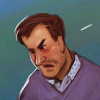
Ilya Pshenichnyj
Ilya Andreyevich @ Playkot
As Sasha said last year - “Declining what’s important in favour of what’s most important - that’s a rather more difficult task”.
So yeah, all we had to do was: create an engaging game (3 games, actually), splurge out a ton of content for each of them, then enter the market and go up against our competitors. The hitch there is that our competitors are lean and mean as wild dogs: they move fast, have huge teams and tons of resources.
Going toe-to-toe with them, even with a team of 200, is a tough task. So we came up with a way to approach it from another angle.
We weren’t the ones to come up with mobile expeditions. But what if we took that formula and added to it something that we’d learned to do well in SuperCity: personal stories about the relationships between characters in the game?
The mobile builder-producer genre does have its long-established leaders who over the years have built up a colossal amount of content. So what if we add to that our own innovations to casual gaming mechanics that industry developed over the last years for players who love to build but haven’t seen anything new in ages?
It’s true that the top shooters do attract all the hype, put out an endless stream of updates and have full franchise support. But what if we were to find an audience that isn’t fully satisfied by the gameplay and capabilities of existing shooters, and make a game specially for them?
These are ambitious and risky undertakings. But the first metrics we got back at the end of the year tell us that, for all three projects, we are edging ever closer to the global release.
Little pigeons carry great messages
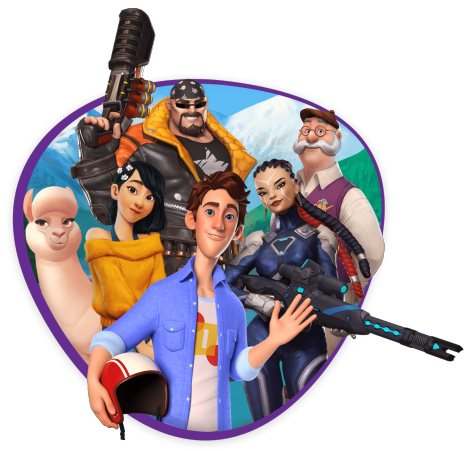
2021
- 235
- people

Sasha Gorlach
Producer @ SuperCity
SuperCity goes portal!
It's a big deal for the game to survive the technology it was made on.
Over the last few years, it seemed the game was pretty much doomed. Adobe stopped supporting Flash Player—the technology all our social games were built on. Knights, Titans, Tropic Storm were all closed down. SuperCity’s player base has been decreasing.
For our citybuilder to survive, we had to port the game from the now-obsolete Flash to HTML5. We weren’t at all sure it would be worth it, it was clear it would be neither quick nor easy to achieve. But we took a risk and SuperCity was kept alive. The costs of moving to HTML5 were recouped in a couple of months and that summer we celebrated the project’s 10th anniversary.
So the game lives on. Its creators invested so much potential into it that it may well live a second decade. When we had dealt with the technical limitations, we started expanding it to other platforms, so we could reduce our dependency on social networks.
We’d made the first step: in 2021, we launched a games portal version. Now we’re going past dashboards in the office and getting a view of the graphics—oh, and how many new players have joined the fun today?
2022
- 350
- people

Yevgeny Smirnov
Casual CPO
Global launch of Spring Valley

The story goes back to 2018. I was then working with my super talented team on SuperCity. At the same time…
…we couldn't help but throw around ideas for a brand new game during our lunch breaks with Igor, the Art Director, and Iana, the Game Designer.
One idea stood out—a free-to-play mobile farm game with relationships at its core. Igor and Iana were all for it, but I had my doubts. There was no clear reference for such a game, and honestly, it felt like uncharted territory.
However, during a road trip to GDC in 2018, surrounded by the breathtaking diversity of the American landscape, a vision crystalized. It struck us like lightning: our next big thing should be a farm game with expeditions. The market for casual gaming was on the rise, and it felt like the perfect moment to dive in.
We'd already gathered a wealth of experience with SuperCity, and it felt right to channel it into something new. We wanted to create a game that embodied kindness, a sanctuary for players to escape and relax, where they could be whoever they wanted to be.
Every game we've made has been better than the last. With Spring Valley, we created a unique blend of relationships, farming, and expeditions, all set in stunning landscapes. It was a bold move, especially since it was initially the idea I had been sceptical about.
But as it turns out, sometimes, the road less traveled leads to the most rewarding adventures. And on April 26th of 2022, we’ve invited the world to join the adventure of Spring Valley.

Helen Artyukh
CHRO
With our roots deep in Cyprus, we've been eager to branch out even further across Europe. Thus, we hit another significant milestone with the founding of our new office—the largest so far—right in the heart of Belgrade. This isn't just another location—it's our second European home, joining our long-established base in Limassol.
We're here adding our voice to the European tech scene, cultivating our connections in the international community, and propelling our ambitions to shape the gaming industry, and each day takes us further on this exciting path.
A New Home Away from Home, in Belgrade
2023
- 370
- people

Alexander Ginglyatt
CPO, Producer @ Age of Magic
Learning Through Doing: Launching Our R&D Branch
Imagine walking a tightrope, blindfolded.
That's what making games looks like: one side is knowing your players, the other side is learning by doing. And here’s the kicker, to make sure we get that feedback from players fast enough, we have to put more products out there in the wild, and pronto.
In the past, our process was pretty much straightforward: design a game, polish it until it shines, and then let it loose on the world. Then it was a wait-and-see-and-adjust game, as the market weighed in on whether it was a hit or a miss. We've seen both sides of that coin, but over 50% of our projects have been successful. That's something we take pride in.
But we've got to keep up — it's all about staying light on our feet, and being ready to pivot.
So, in 2023, we took a bold step. We launched our R&D department. A crew of go-getters, ready to dive into rapid hypothesis testing and iterative development. Meanwhile, we see synchronous real-time gameplay as a promising direction—and we focus heavily on this area while also improving our proprietary game engine and shared solutions. And as we forge ahead into the realm of real-time gaming, one can’t help but wonder: What new worlds will we explore next?
The game, as they say, is afoot.
- 2086
- Who knows where we'll be...